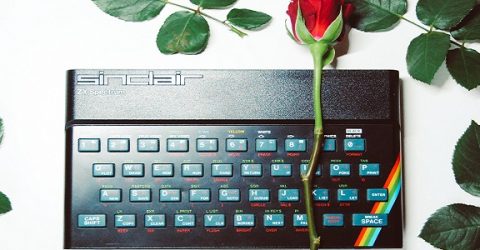Celebrating forty years of home computing

The history of home computing is a fascinating one, not least since it’s difficult to define the point at which computers made the leap from the workplace into our homes.
Arguably, the 1972 Magnavox Odyssey represented the point where computing power became domesticated, though it was a games console rather than a conventional computer.
The 1971 KENBAK-1 was perhaps the first personal computer, but the term ‘personal computer’ was first applied to the Altair 8800 four years later.
However, the Altair was ruinously expensive
A year after the Altair arrived, so did the Apple I – albeit with no keyboard, power supply or tower. This self-assembly kit computer therefore sold in miniscule numbers.
Auf wiedersehen, PET
There were attempts at establishing home computers in the late 1970s, like the Commodore PET, but high prices, poor reliability and unintuitive design dampened demand.
For many people, the history of home computing began in 1980, when four hugely significant models arrived onto a burgeoning market.
The Sinclair ZX80 debuted almost exactly forty years ago, competing against the new Tandy TRS-80 III, Commodore VIC-20 and Apple III.
Apple introduced innovations like a hard disc drive, the TRS-80 offered a colour screen, and the VIC-20 was sold in toy shops and department stores to maximise consumer uptake.
Meanwhile, the ZX80 and its ZX81 successor would morph into the wildly successful Sinclair Spectrum, which was the first home computer in millions of British households.
Throughout the 1980s, there was growing demand for 8-bit home computers including the Spectrum, the Commodore C64 and the Amstrad CPC-464.
And while the Eighties also saw the IBM PC and the BBC Micro encroaching into the home, these devices remained respectively corporate and academic in both focus and adoption.
By the 1990s, 8-bit computers were giving way to more powerful 16-bit machines, capable of vastly superior performance and processing.
The Commodore Amiga was the first truly multimedia computer, while the rival Atari ST was preferred by home workers.
This reflected a growing enthusiasm for computers as multifunctional devices – not simply games machines, but also capable of running spreadsheets and word processing programs.
Indeed, gaming was already shifting to specialist consoles like the Sega Mega Drive and Nintendo SNES, even before Sony’s PlayStation revolutionised computer gaming in 1994.
The following year, Microsoft unveiled Windows 95, and the PC finally became a viable option for people wanting to use a computer at home, rather than merely at work.
Easy to use yet powerful, and capable of running programs other machines couldn’t emulate (in any sense), Windows 95 became the default operating system on most home computers.
Caught in a Web
The emergence of the internet provided another compelling reason to buy a PC rather than other 1990s hardware.
By 1998, Microsoft was bundling Internet Explorer in with its new Windows 98 operating system, securing a dominant position in the home computing marketplace.
While Apple and Linux continued to offer alternative operating systems, the days when Clive Sinclair or Alan Sugar could launch a home computer system from scratch were over.
So far this century, only Google has managed to challenge Windows, Apple’s OS X and Linux, by introducing a range of affordable laptops powered by its own Chrome OS.
And while tablets were heralded as desktop-killers a few years ago, sales volumes are dropping even as PC sales experience a resurgence.
Globally, 261 million PCs were sold last year, suggesting the history of home computing has several chapters waiting to be written.






